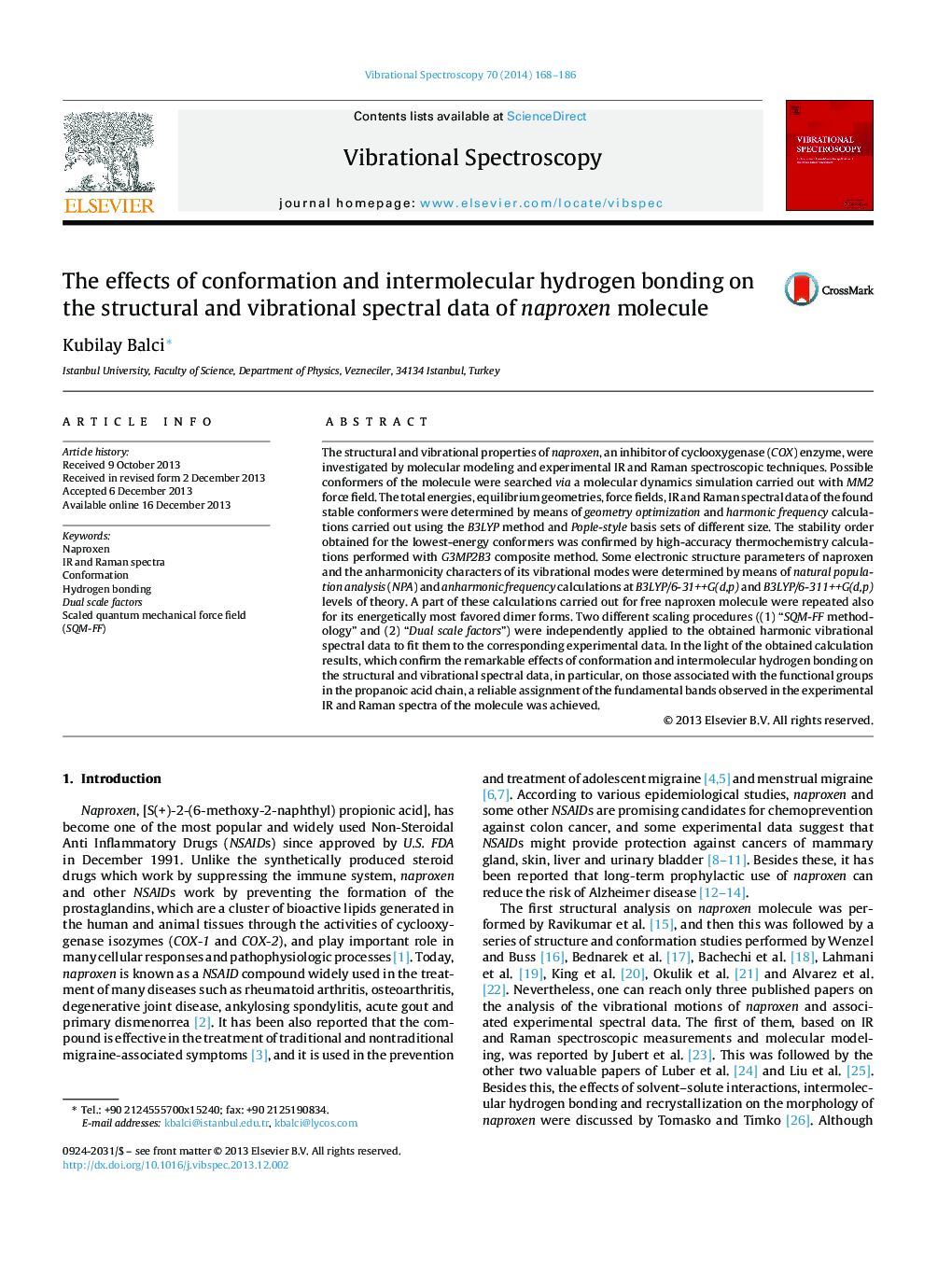| Article ID | Journal | Published Year | Pages | File Type |
|---|---|---|---|---|
| 1249970 | Vibrational Spectroscopy | 2014 | 19 Pages |
•Conf. C1 and conf. T1 are the most stable cis and trans conformers of naproxen and dominate its room temperature experimental vibrational spectra.•Intermolecular hydrogen bonding and thus dimerization increases the stabilization of naproxen, considerably.•Remarkable changes should be expected for some structural and vibrational spectral data of naproxen depending on conformation and dimerization.•A correct analysis of the IR and Raman spectra of naproxen could be achieved on the basis of the improved theoretical spectral data.
The structural and vibrational properties of naproxen, an inhibitor of cyclooxygenase (COX) enzyme, were investigated by molecular modeling and experimental IR and Raman spectroscopic techniques. Possible conformers of the molecule were searched via a molecular dynamics simulation carried out with MM2 force field. The total energies, equilibrium geometries, force fields, IR and Raman spectral data of the found stable conformers were determined by means of geometry optimization and harmonic frequency calculations carried out using the B3LYP method and Pople-style basis sets of different size. The stability order obtained for the lowest-energy conformers was confirmed by high-accuracy thermochemistry calculations performed with G3MP2B3 composite method. Some electronic structure parameters of naproxen and the anharmonicity characters of its vibrational modes were determined by means of natural population analysis (NPA) and anharmonic frequency calculations at B3LYP/6-31++G(d,p) and B3LYP/6-311++G(d,p) levels of theory. A part of these calculations carried out for free naproxen molecule were repeated also for its energetically most favored dimer forms. Two different scaling procedures ((1) “SQM-FF methodology” and (2) “Dual scale factors”) were independently applied to the obtained harmonic vibrational spectral data to fit them to the corresponding experimental data. In the light of the obtained calculation results, which confirm the remarkable effects of conformation and intermolecular hydrogen bonding on the structural and vibrational spectral data, in particular, on those associated with the functional groups in the propanoic acid chain, a reliable assignment of the fundamental bands observed in the experimental IR and Raman spectra of the molecule was achieved.
